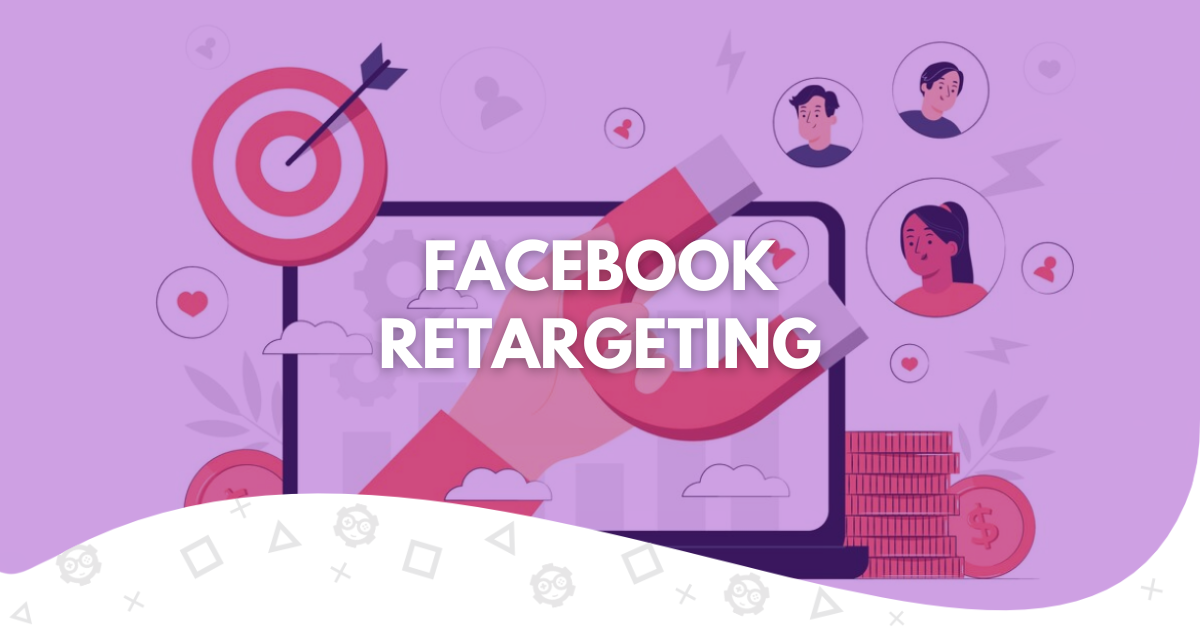Retargeting has been one of the most successful ways of getting people interested in your products. Whether it’s something as simple as convincing people to buy your product on your site or if you use dynamic ads on multiple websites – the primary purpose of this tool is simple – you want people to find your product and buy.
You have probably seen those ads before. After visiting a website, putting your items into the cart, and leaving, you will see those products all over the internet. Why? Well, they are using something called retargeting. It’s a pretty interesting concept if you think about it.
Every time you use a website, it adds data to your browser, called cookies. With each cookie you get, you will have more data about the different websites you have visited. Why do they do it? Well, big corporations like Google and Facebook use those cookies to present ads they have bought out on various sites or at Google or Facebook itself.
So, if you want to create audience for your ad campaign, there is no better way of accomplishing that than to create retargeting ads. Why? Well, it’s pretty simple: people are already interested in your product. And the studies prove it. Retargeting ads are 10x more effective regarding CTR and 150% better with conversions. So, it’s a no-brainer to set up those apps.
In this article, we will go over all the steps you need to take to start your remarketing campaign; we will show you different types of dynamic retargeting ads and present some good ideas for development. So, without further ado, let’s dive into it!
What Is Retargeting?
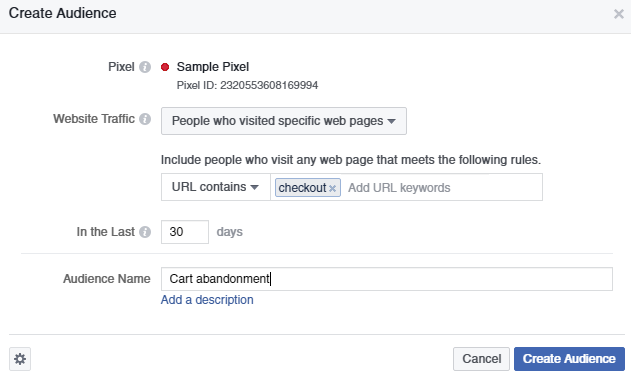
Retargeting is a specific Facebook Ad campaign that aims to create an audience with its efforts and primarily market to people previously interested in this campaign. It’s one of the most effective digital marketing strategies, as it also allows you to adhere to new and old clients.
Sometimes, it’s the sole product the customer is trying to buy, but retargeting ad campaigns often focus on adding additional benefits to the already existing offer. For example, adding some accessories to it, maybe luring the customer with some call to action, like – buy this now and save 10%, limited offer(example below)!
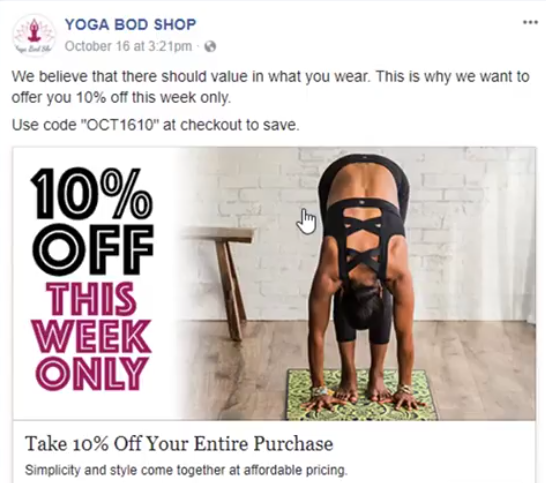
There are plenty of ways that those PPC ads can help you out in your everyday life, especially if you consider implementing retargeting strategies to your already existing ones. Let’s review the steps the customer goes through in that process.
Interact with User
Everything starts with the user getting to the website. They may be browsing, thinking about buying something or doing their research. Then, they will either finish the action, buy what they were looking for, and head out, or – don’t do the desired action. Then, it’s time for some retargeting.
Tracking Time!
After the user leaves your website, a cookie gets dropped in their browser. Each time they enter another site or another part of a social media platform, ad spaces created by this site and bought by Google or provided by Facebook in our example will show the user pre-programmed ads to lure them into buying the product.
Retargeting Time!
Another big step is to create retargeted ads. You can remind the user that what they were looking for is an excellent product after all this time – they can get it with a discount, or maybe they would be interested in some accessories to pair it up with the product. There are plenty of ways to advertise on Facebook, that’s for sure. It’s also great for lookalike audiences on other websites, as you will get the people initially interested in the product and those whose behavior online is similar to what you have just observed with your site.
Retargeting vs. Remarketing
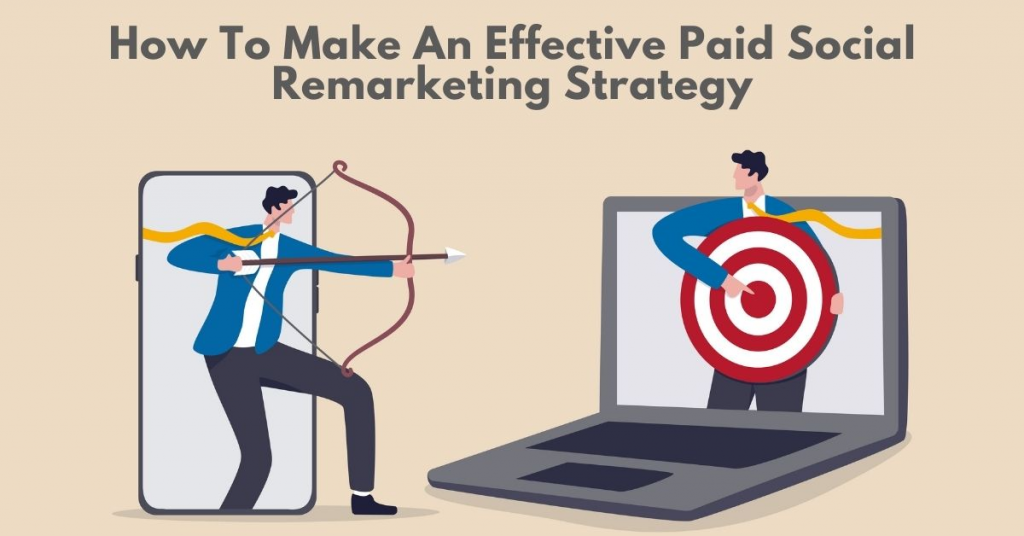
As you may have noticed, we’ve been using both retargeting and remarketing alternatively, as it is, indeed, being used in the industry. Well, some people try to differentiate between these two ideas, so we will do justice and present those justifications. Of course, you will probably understand it primarily by feeling it in your speech. Remarketing is often used to introduce the concept of showing users products once more. Retargeting usually refers to the ways that you are presenting those products. Let’s now dive deeper into what those mean precisely.
Retargeting
Let’s start with retargeting. In the simplest of understandings, it would relate to all the tools you have been using to re-engage your audiences. Those would mean getting some ad space on Google Ads, creating a special banner for this purpose, or finding ways to optimize your retargeting efforts on multiple platforms.
Remarketing
Remarketing then refers to the strategies you have partaken in to get potential customers. It would include creating a new system with ad copy that lures the audience even more and trying to better target the customers on various platforms with in-depth customer behavior studies. Additionally, it can be understood as all the efforts to advertise to people who have bought something on your site. So, focusing on conversions rather than anything else. But, as we have already explained, people tend to use those interchangeably, so do as you please.
Types of Retargeting on Facebook

Now that we know what we are talking about, let’s review some of the remarketing types we will focus on in this article. Whether it’s a retargeting ad on your Facebook page or using some outside force to bring people to your site, one thing is clear – your retargeting campaign will surely need some push to get where it needs to go. To do so, it will need to follow one of two paths – either a Facebook pixel installed on the website or a list-based retargeting strategy. Let’s now go over those and see which one will be the best suited for your efforts.
Facebook Pixel Retargeting
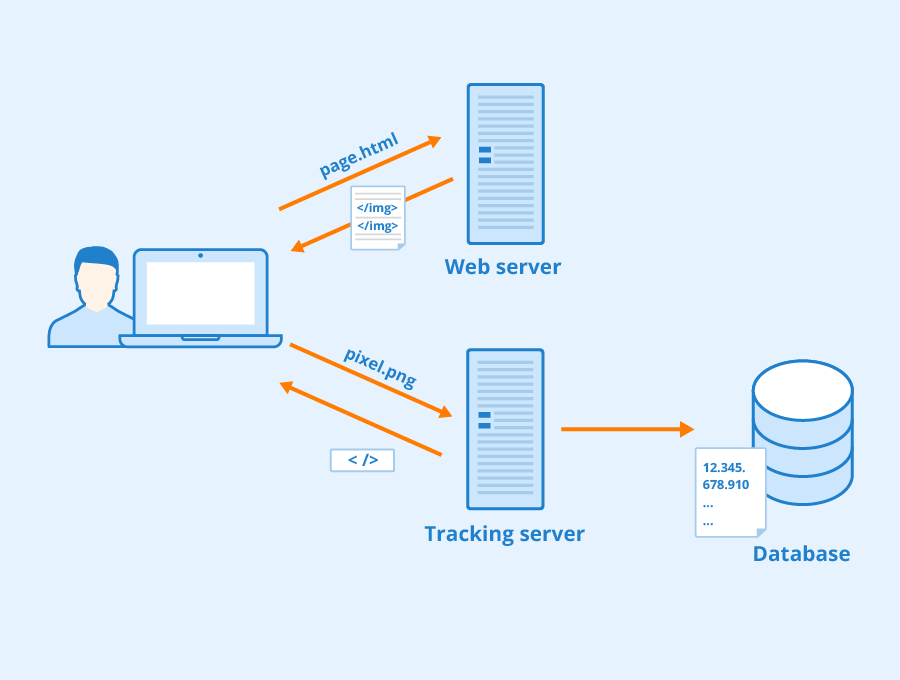
Let’s start with the first one, as it is the most common form of this method. The Facebook retargeting campaign using this method often creates a piece of JavaScript, aka Pixel or cookie we have mentioned earlier, that will then be placed in your browser to show you the targeted ads suited just for you. If you leave the website, this pixel left in your cookie jar will inform all the other platforms in the platform’s reach that you have seen this kind of product, so why not show it to you again?
It can also be shown within one platform, like your Facebook feed, where you will be shown the same pieces of clothing you have clicked on. There are plenty of upsides to this method, of course, with the most prominent being – it’s just highly effective if done correctly. You already know the patterns and behaviors of the users who click on this website and can create new and upgraded versions of ad copies to satisfy their needs. On the other hand, it’s constrained to people who visited your website and left. So, if you need a boost of clientele, this one is probably not right for you.
List-Based Retargeting
On the other hand, we have list-based retargeting. Here, it’s not that Facebook or Google are chasing people all over the internet to sell your products. Here, it’s all about you providing those tech giants with information on your clients. How did you obtain those – it’s totally up to you. You could get them by sending newsletters or using various social media sites to create a buzz or whatnot. There are plenty of ways to do so, with one thing being clear from the start – it will be highly effective.
People who have already been in contact with your company, have discussed potential partnerships or even enjoyed your company will likely respond positively to this advertising. The downside is that you need to collect this data, and, as most tech giants cannot tell you, as they are doing it constantly without effort, you will probably have a bit of trouble collecting a substantial amount of followers.
Benefits of Retargeting
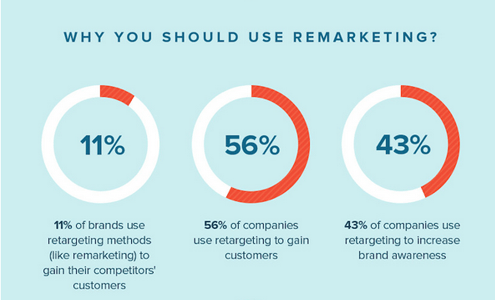
Source: Digital Agency Network
So, now that we are familiar with the types of retargeting, let’s talk about why we would even consider doing it! The obvious answer is – for money! The less obvious is – to gather even more significant potential to sell our products, gain website traffic to a particular page, increase our company’s brand awareness, and even get some likes and views in the process.
It’s a win-win scenario for all the parties involved. So, let’s review all the crucial elements that make all the marketing agencies recommend this one!
Great ROI
First, let’s talk about the ROI – Return on investment. Most studies show that retargeting has one of the highest return rates out of all advertising activities when it comes to getting back for what you have paid for.
As mentioned, every dollar you spend gives you ten times more CTR than usual advertising and even a 150% greater conversion rate. Those are incredible numbers, considering that the reach itself for Facebook advertising is high among all the other social media platforms. Standard advertising can be costly, but getting people to revisit your site is much cheaper and takes less time than convincing the unconvinced.
Target Specific Audiences
The next great thing about retargeting, especially with Facebook Ads, is that you can target narrow and specific audiences more likely to buy your product; hence – you are not overspending on ads trying to reach people who have no contact with you. With the information on what products people have already searched for, you can quickly tap into their interests and get the most out of online advertising.
Facebook has one of the greatest audience targetings, as they collect lots of data about their users, from their age and gender to even such things as interests and hobbies. That way, they can advertise to the core audience who already visited your store and lookalike audiences who could potentially be as interested in your products as the retargeted crowd.
Great Conversion
And finally – Facebook Retargeting works wonders for conversion rate for e-commerce especially. Studies show that the average conversion was around 1.5%. With retargeting, those numbers jump up to even 3% and more!
You may think that those are small numbers, but consider the following: people rarely buy something they browse. And Facebook provides you with an enormous reach that little to no other competitors can do. So, think about it this way: with 100,000 reach, you will get around 1,500 people buying your product. If those 100,000 people were retargeted, those numbers jump to 3,000. And it’s a lot of customers in the end. Even if each one would leave five dollars at your store, it’s 15,000$. And trust us, getting those numbers on Facebook will cost you much less than that.
How to Retarget on Facebook?
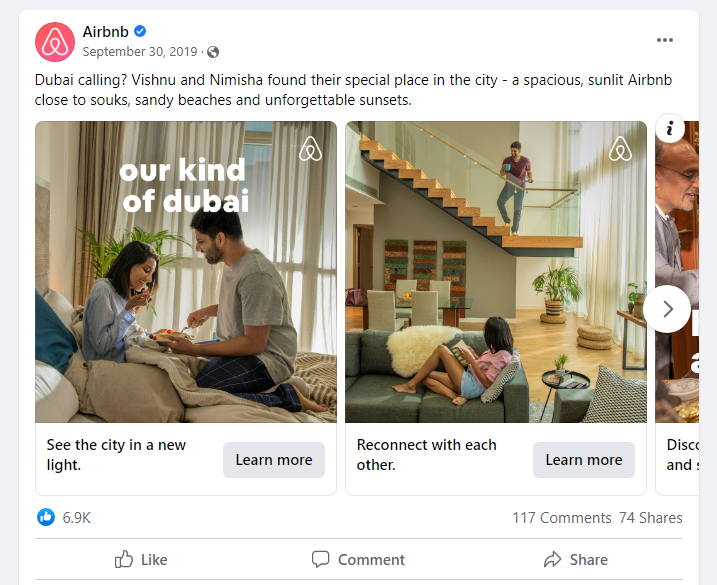
So, now that we know how Facebook retargeting works, let’s go over some in-depth guide on setting up your retargeting campaign. Of course, each campaign is different, and different goals require different approaches. Sometimes, you must add or scratch some elements from this retargeting ad.
In our experience, we recommend trying things out with smaller amounts first before getting the big bucks out, as there will be some adjustments that most advertisers will have to make. Also, make quality ads. If you can’t create something that looks good – hire a graphic designer. If you can’t do some quality slogans – find a copywriter who can help you out. Quality is everything when it comes to marketing, as it affects your Quality Score that, in effect, will also influence how well your remarketing efforts are doing.
The worst thing you can do is spend hundreds of dollars on an ad copy that doesn’t look that good. Nevertheless, here are some steps to take to retarget on Facebook.
Find Your Audience
First of all, you will need to create pixel-based retargeting. That will require you to add a Facebook Pixel to your website. We will not go over that particular process in this article, as plenty of sites utilize different methods.
If you are using some of the most common site builders, you can find a guide online with no problems. Then, you will have to create Custom Audiences in the Audience section of your ad manager. There will be lists of potential audiences that you may be interested in. Here are the most common ones that you may be interested in when it comes to retargeting:
- People who engaged with your brand on Facebook and Instagram
- People who visited your website
- People who spent a certain amount of time on your website
- People who visited specific pages of your website
- People who viewed a product (called “viewed content”)
- People who added a product to their cart
- People who initiated checkout
Apart from the Meta pixel, you can also utilize the other ad format we discussed in this article – list-based advertising. You must add a customer list in a file and upload it to Facebook. There are plenty of ways to inform Facebook about the people you would like to retarget, like their phone numbers, email addresses, or even Facebook profiles. With that information, Facebook will create a Custom Audience for your online store or e-commerce website that will benefit your retargeting efforts.
Audience Targeting
Next, you will have to decide which segments you will target for this particular ad. You can do it in your Business Manager. After you open the app, the users’ activity will show up, and you can decide who to choose for targeting.
Who you are targeting will highly depend on what your product is and the typical behaviors of the people in your target audience. For example, suppose you usually have products that are not expensive and are often considered impulse purchases. In that case, you may abstain from promoting it further than 30 days after the first interaction.
Of course, if you have more advanced products that need more consideration, like a new PC or a car, it is understandable that making those decisions will take more time for people to get acquainted with. So, be sure to include that in your targeting.
Optimize the Audience
After segmenting your audience, you must structure a sales funnel to optimize your ads and retarget people more effectively. Go to the Ad Set part of your Facebook Ads Manager and target specific audiences that you want to engage at this particular moment.
For example, you may want to exclude people who bought something from your site for retargeting purposes, as those audiences are less likely to purchase something again quickly. Or, if you would like to get more likes under your posts, you don’t necessarily need to target people who went to your website to buy something. Instead, You should focus on getting to the people on social media who previously engaged with your posts.
That way, you will be able to separate the audiences for different purposes and juggle between your campaign objectives if necessary. There is a vast difference between social media engagers and purchase-people, so you should approach the topic differently to funnel the right people to the right places. Exclusions are necessary to avoid those audiences overlapping and losing money.
Budgeting
After setting up your campaign, it’s time for the most critical part – budgeting! Here, you can decide what budget you are willing to spend on your campaign and how many people you are eager to target. We cannot tell you exactly how much it will cost to promote your particular product or service, as you will need to consider plenty of elements.
First, the price of your ad campaign will be based on your location. Where you live will most likely determine the overall cost of an ad campaign. Next, remember that some industries are worth more than others. For example, if you sell pretty cheap T-shirts, you will find advertising reasonable. On the other hand, if you are selling expensive goods like real estate, for example, advertising will skyrocket.
The most important thing is to start with something moderate and then, after the testing period, go up in scale with costs. If you have a low-cost product, you can advertise up to 30 days after the first interaction. With more expensive products, you must create a larger budget and set the retargeting campaign for up to 180 days since the website visitors have interacted with your product or service.
Optimize Your Facebook Retargeting Campaigns
And finally — optimize your campaign efforts! Be sure to check how they are doing occasionally to see if everything is running smoothly. Of course, there will be plenty of issues when it comes to creating the right campaign, from custom audiences to finding the right lookalike audience and managing separate campaigns – there is a lot to keep track of, that’s for sure.
The most important thing to consider in this situation is to monitor your spending and see if you are getting the engagement you paid for. For example, you may be getting a lot of likes under your posts but zero conversions. That way, why you chose this kind of campaign would likely not be accomplished.
Additionally, don’t be afraid of changing your budget here and there. There are plenty of reasons to do so, and you will undoubtedly come across the situation when you are complete with your service, or you may need some additional push, as your ads may not be winning bids.
Facebook Retargeting – Tips
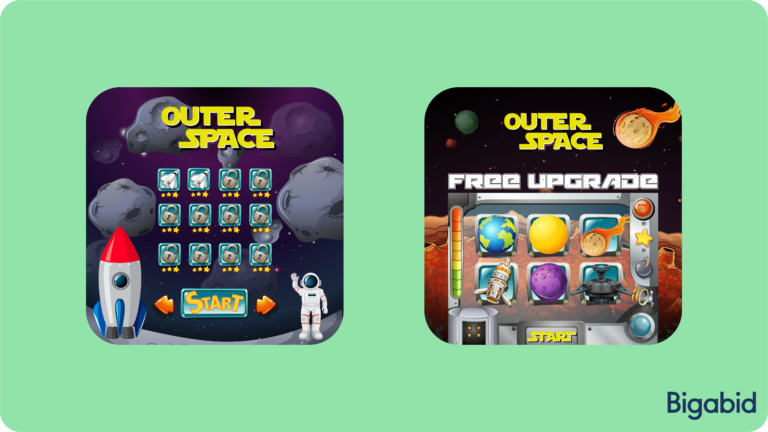
Source: Bigabid
So, now that we know all the essentials about Facebook retargeting ads, let’s go over some tips you can implement in your efforts. As usual, be sure to check out your efforts with professionals, as you may be spending money on nothing and losing all the potential of your advertising in the process.
Getting prospective customers is not an easy task, for sure, but with our help – you will be able to generate leads, get more likes, or create your very own retargeting lists full of fantastic people willing to spend money on your business. With that in mind, let’s dive in!
Custom Audiences
As we have mentioned before, it’s important to segment your audience into custom audiences. You can do it with your audience manager in the Facebook Business Suite. By doing so, you will be able to select custom audiences from your list whenever you need to achieve certain campaign goals. It’s especially important with retargeting, as you can target audiences not only from the “cookie jar” we have explained before but also from your very own lists. Those audiences may have different goals or pockets, for that matter, so make sure that your ad spend is in the right place. You wouldn’t advertise women’s lingerie to some gamers looking for a new EA FC game, would you?
Negative Audience
And for that reason – it’s great to create what we call in the industry – a negative audience. Similarly to what you may have known from the Search Engine Optimization best practices, it’s not only about finding related keywords. Sometimes, it’s all about defining the ones you certainly would not like to get.
So, in order to accomplish that goal, it’s important for you to identify the audiences that may not be the interested customers you were looking for. Discourage those completely oblivious to your product and people who are not interested in engaging with your content.
Let’s examine that with an example. Say you are running a store and a content-based website. On the one hand, you are selling gaming equipment and game keys; on the other – you are writing about tech news, maybe doing some podcasts, etc.
If you set the ad to retarget people who have already visited your site in order to present them with the product, you may encounter a problem. There will be dozens of people who, for example, watched your video on “Controversial topics in the gaming culture,” and got sent lots of GTA ads or something. Let’s just say that this would not be the optimal usage of your ad money, that’s for sure.
Discount/Accessories Offer
Additionally, don’t just show people the product they added to the chart. Show them that product with a discount! People are much more likely to purchase something with a limited-time offer than for a regular price. It has been proven time and time again with Black Friday sales. Sellers would up the prices a few weeks before, only to do some massive discounting to the regular ones. And it works wonders.
People were buying like crazy, scared of, well, scarcity and potentially higher prices. Everyone is looking for an offer, so if you can present one – do just that! Additionally, you can show the customers some other products or accessories that you can add to the cart for a small fee or free.
In our experience – we do not condone this tactic, as it will just get people to trust your company less and, in the long run – hurt your reputation.
Ad Testing and Optimization
And finally – be sure to test out your ads! Create a separate ad in order to get as many people as possible to get interested in your product. Do A/B testing for a small fee, maybe add some more advanced copy, a different Call-to-Action, or change the font. It’s extremely important, as it can make or break your ad in the process. This is how retargeting works – you set it up, you optimize, and then – you check it out again. Facebook is very welcoming when it comes to ad testing, so make your efforts matter!
How to Retarget on Facebook – Conclusion
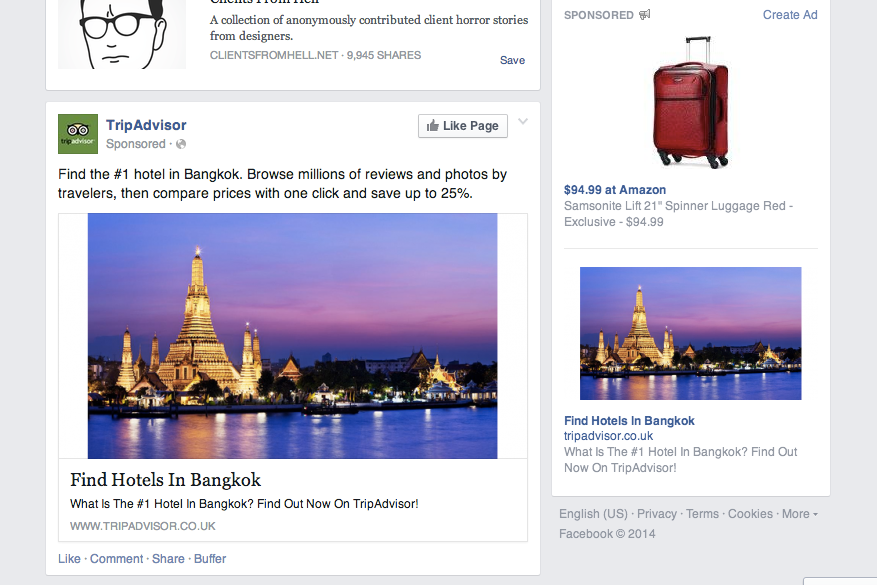
So, now you know how Facebook retargeting works. Of course, there are plenty of other ways that we could teach you, from something specific about creating custom audiences, how to set up your budget, or even such plain elements as creating an interesting ad copy. But, this article would be a neverending story, where we would be just adding additional elements on top of each other, so we have decided to just stick to the basics.
As we have mentioned before, Facebook retargeting is an extremely beneficial tool and a great way to increase the number of people interested in your products. Of course, it’s a limited group because it would only include the people who have already visited your website or those from your personal network. Still, the conversion rate is astonishing in this particular case, so we definitely recommend utilizing those efforts in order to get even more sales. But, like all tools, it is only as good as you use it, so be sure to create a quality ad copy, select the right audiences for your campaign goals, and overall – do a lot of testing before putting some big bucks into the system. Trust us; it will be worth your while in the long run!
And if you need some help with that – contact GamerSEO for some guidance. It’s always best to have professionals guide you through the digital advertising maze to save money and reputation in the process!
Thanks for stopping by! If you liked this article, be sure to check out other ones on our site. We have a lot of different ones on various topics, from SEO, gaming, software, and all the latest trends in the digital marketing world! We are sure that you will find something to your liking. That’s it for today, stay tuned for the next one!

A PPC specialist who started with organic social media. For several years, the core of his activities are:- Google Ads, Microsoft Ads, Meta Ads, TikTok Ads, Twitter Ads, Linkedin Ads. He has led campaigns with a global reach, e.g. for FootballTeam, G2A, ETOTO, as well as many smaller campaigns in the sports, construction and financial industries. Has full focus on ROAS. Privately, a fan of football, history of wars and Star Wars.

